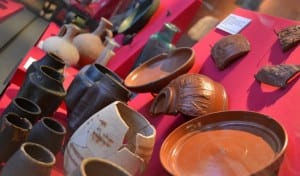While it seems we have moved away from our original first ideas, there are still some components we have previously considered that will be included. Instead of performing in the Collection, we have chosen a room upstairs in the Usher Gallery. We still want to connect the history of the site with modern elements found elsewhere, but have chosen to focus less on Lincoln and rather on our own history and roots. With that in mind, we have drafted an artistic statement relating to our new idea.
“It is our intention to smuggle our personal culture into a historical city, in order to juxtapose our ‘otherness’ with the narrative of the site. In order to do this, we plan on creating a sculptural model of Big Ben to signify our personal history. Within this cultural context, we also hope to include sound and costume that will strengthen our aim. By moving certain elements of London into such a cultural space, we hope the audience will be encouraged to explore their own history within an incongruous site.”
Elements to Consider
- What sort of soundscape shall we use?
- What sort of costume? Shall this relate to our personal culture or the Gallery?
- How can we signify London clearly?
- How long do we want our performance to be?
Author: Lacey Cole
